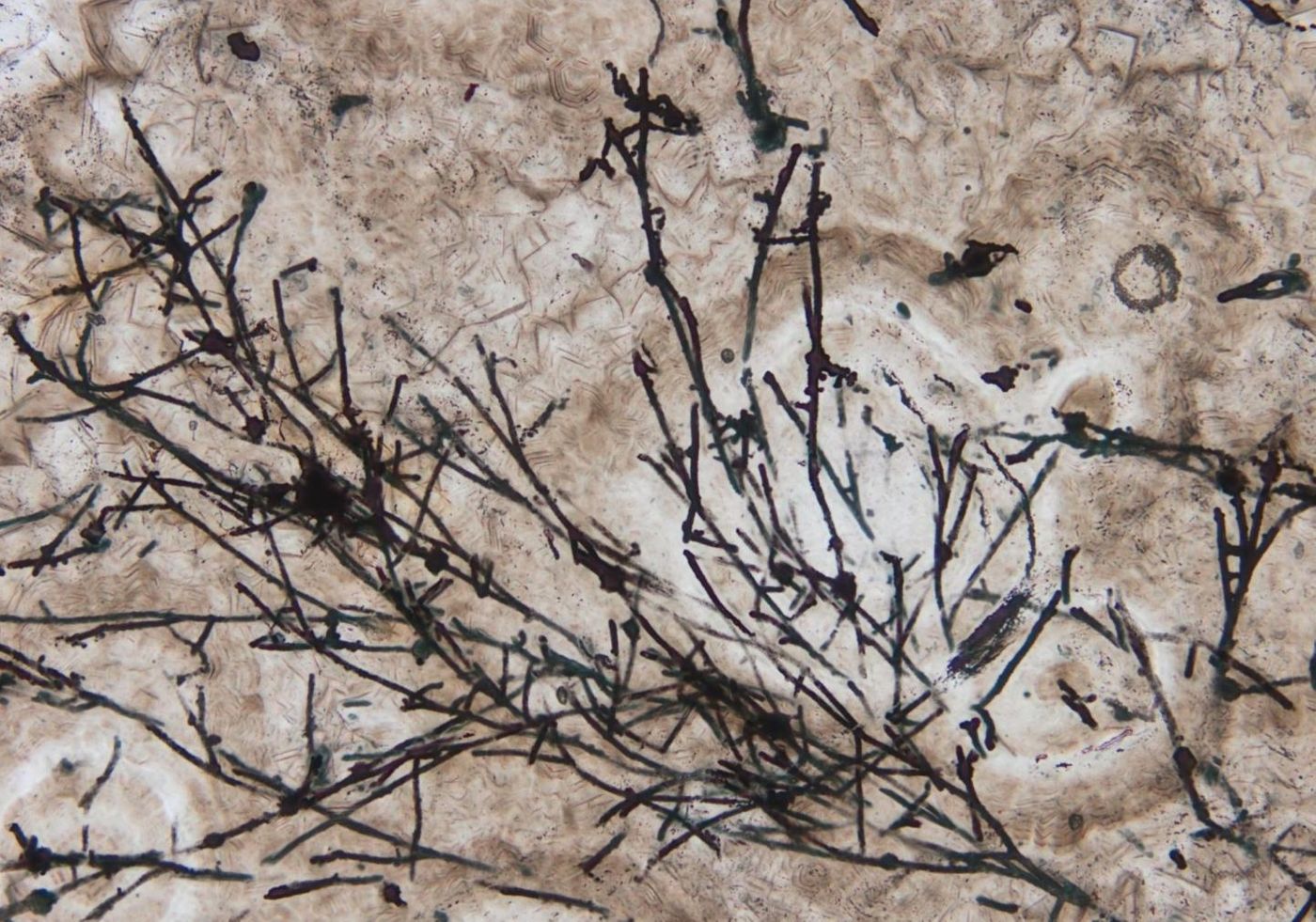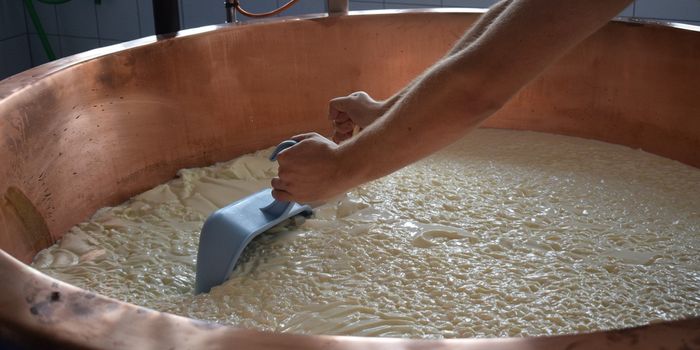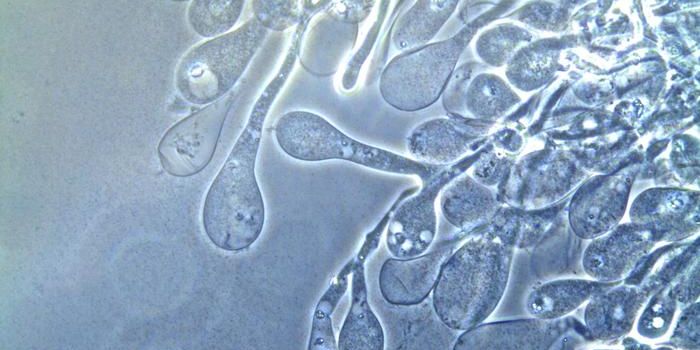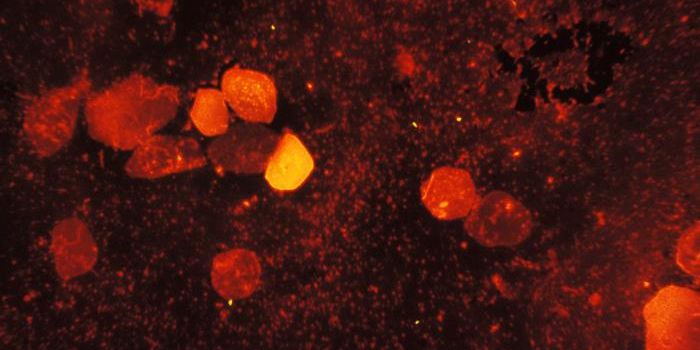A 635-Million-Year-Old Microfungus That May Have Saved Life on Earth
Fungi aren't typically thought of as saviors. But new research has suggested that a microfossil found in South China is the remains of a fungi-like organism that was one of the last things left standing after an ice age about 635 million years ago. This specimen is thought to be the oldest terrestrial fossil ever discovered; it's around three times older than the oldest known dinosaurs. An international team of researchers reported the findings in Nature Communications.
Many fossils have been recovered from the dolostone rocks of the Doushantuo Formation in South China, but researchers weren't expecting to find fossils near its lower base.
"It was an accidental discovery," said Tian Gan, a visiting graduate student in the lab of Shuhai Xiao, a Professor of Geosciences at the Virginia Tech College of Science. Gan found long filaments that are characteristic of fungi in tiny cavities in the rocks.
"At that moment, we realized that this could be the fossil that scientists have been looking for a long time. If our interpretation is correct, it will be helpful for understanding the paleoclimate change and early life evolution."
Fungi are essential to life and they're known for their ability to recycle; they enrich the environment and break material that can't be used by plants or animals into things that can be. They've also helped life on Earth recover from an ice age. At the beginning of the Ediacaran period, an ice age had just ended and oceans were frozen down to a depth of over a kilometer. Only microscopic life is thought to have survived this period.
Tian and Xiao suggested that these microscopic, fungal organisms helped to recondition the terrestrial environment during the Ediacaran period. Fungi have a unique metabolism that enables them to break down tough matter including rocks by releasing enzymes. The byproducts of these reactions are then released into the soils, the ocean, and the Earth's environment.
"Fungi have a mutualistic relationship with the roots of plants, which helps them mobilize minerals, such as phosphorus. Because of their connection to terrestrial plants and important nutritional cycles, terrestrial fungi have a driving influence on biochemical weathering, the global biogeochemical cycle, and ecological interactions," Gan explained.
Previous studies have suggested that terrestrial plants began a symbiotic relationship with fungi around 400 million years ago; this work has challenged that timeline.
"The question used to be: 'Were there fungi in the terrestrial realm before the rise of terrestrial plants'," said Xiao. "And I think our study suggests yes. Our fungus-like fossil is 240 million years older than the previous record. This is, thus far, the oldest record of terrestrial fungi."
The discovery has led to new questions. There were other fossils found near the fungal-like samples, so Gan is interested in whether they are related and how. Xiao is interested in learning more about how these microorganisms stuck around as fossils for so long.
"It is always important to understand the organisms in the environmental context," said Xiao. "We have a general idea that they lived in small cavities in dolostone rocks. But little is known about how exactly they lived and how they were preserved. Why can something like fungi, which have no bones or shells, be preserved in the fossil record?"
There is a lot of evidence to suggest that the specimen is a fungal species, but we still are not totally certain of that, and the investigation will continue.
"We would like to leave things open for other possibilities, as a part of our scientific inquiry," said Xiao. "The best way to put it is that perhaps we have not disapproved that they are fungi, but they are the best interpretation that we have at the moment."
A large team of researchers at multiple institutions were involved in the study of these microfossils, which included timestamping, confocal microscopy analysis, comparison with modern fungal species, geochemical investigations with secondary ion mass spectrometry, advanced computerized tomography, focused ion beam scanning electron microscopy, and transmission electron microscopy. Interdisciplinary approaches were crucial to this study, noted Xiao.
"This wasn't a single person or even a single lab that did this work," said Xiao.
Sources: AAAS/Eurekalert! via Virginia Tech, Nature Communications





![[Guide] 7 Strategies to Boost Laboratory Collaboration](https://d3bkbkx82g74b8.cloudfront.net/eyJidWNrZXQiOiJsYWJyb290cy1pbWFnZXMiLCJrZXkiOiJjb250ZW50X2FydGljbGVfcHJvZmlsZV9pbWFnZV83YzBjZWIwM2Y5YzI4MmFlYzBhZDZhMTcyNTQ1ZGU3YmE4Y2MzMDYyXzUxNDkuanBnIiwiZWRpdHMiOnsidG9Gb3JtYXQiOiJqcGciLCJyZXNpemUiOnsid2lkdGgiOjcwMCwiaGVpZ2h0IjozNTAsImZpdCI6ImNvdmVyIiwicG9zaXRpb24iOiJjZW50ZXIiLCJiYWNrZ3JvdW5kIjoiI2ZmZiJ9LCJmbGF0dGVuIjp7ImJhY2tncm91bmQiOiIjZmZmIn19fQ==)



